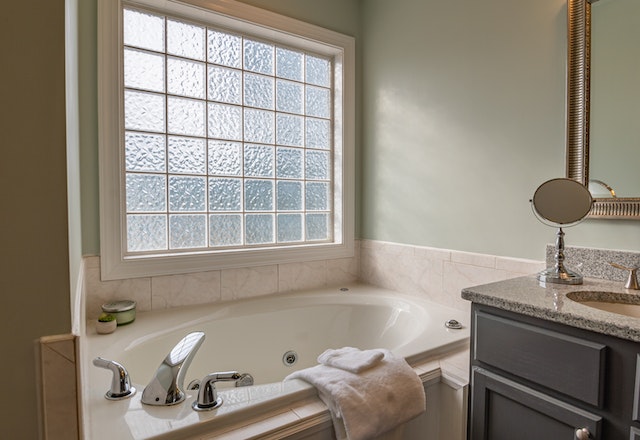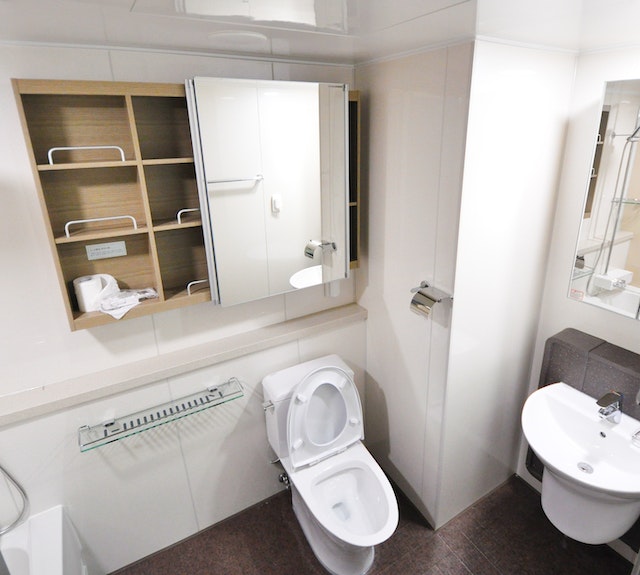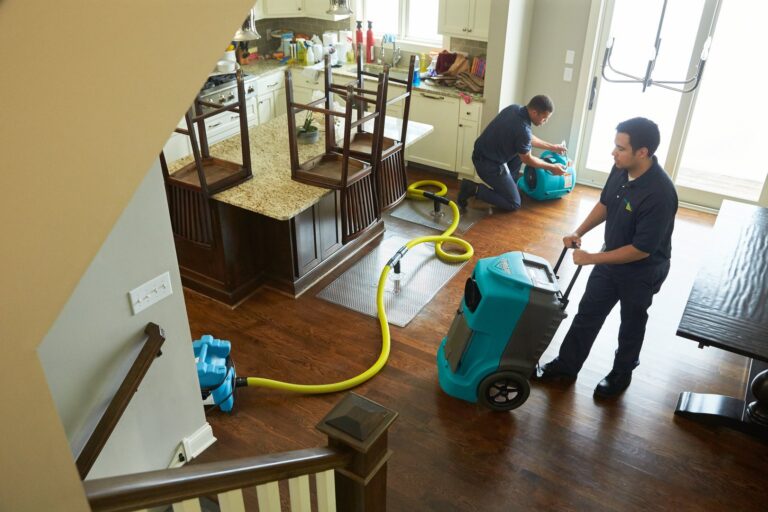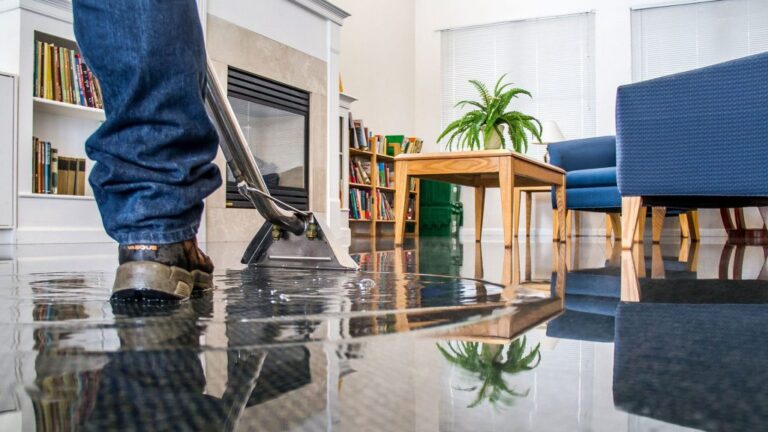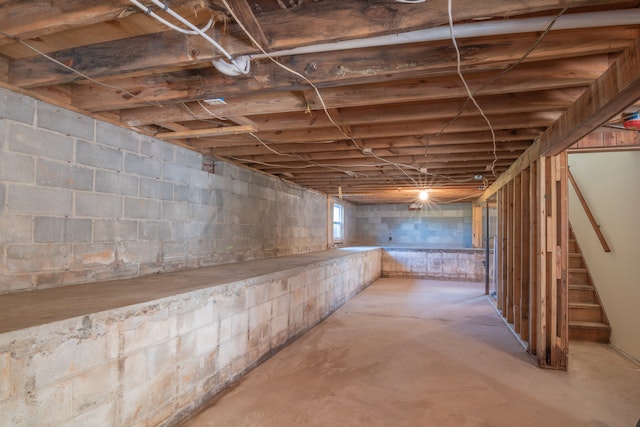Bathroom floods are all too common, often resulting in thousands of dollars of damages. In addition to the repair requirements of burst pipes, clogged toilets, or whatever caused the bathroom to flood, you’ll also need to take extra care to ensure the bathroom is properly cleaned.
When a room floods, the water may come through the shower, toilet, or sink. This guide covers some of the most common causes of flooded bathrooms.
It also reviews a few key steps to take when dealing with a flood, including when to call in a professional to remediate your Tennessee home. Finally, this article provides a few tips to help prevent future floods.
Why Do Bathrooms Flood? Common Causes
Bathrooms can flood for many reasons. Here are a few of the most common causes of bathroom floods:
- Clogged toilet overflows
- Frozen pipes that burst
- Plumbing malfunctions
- Sewer backups
- Overflow drain
- Flooding from other rooms seeping into the bathroom
- Improperly installed sink or toilet
- Inclement weather
Flooded Bathroom? Your 8-Step Guide To Clean Up a Flooded Bathroom
Timely repair and cleanup are a must when dealing with a flooded bathroom. Here are a few essential steps to take after a flood:
Identify the Leak and Turn Off the Water Supply
The first thing to do when dealing with a flooded bathroom is to identify its cause. Find out what led to the flood, whether a toilet backed up or a pipe burst in the wall. Once you locate the cause, turn off the water supply. This prevents excess water from making the bathroom flooding worse.
You can find the shut-off valve near the leak, possibly behind the toilet or under the bathroom sink. You might also find the shut-off valve in the water closet or near the water meter. However, you’ll want to shut off the main water supply if it’s a burst pipe.
Contact a Professional
After you have stopped the water, contact a professional water remediation company. It doesn’t take long for mold to begin growing, and the steps you take now will determine the extent of the bathroom damage you incur. A water restoration company can also help you tackle the next few steps, like filing an insurance claim and collecting estimates from repair contractors.
Dealing with a flooded bathroom can be overwhelming. A restoration company can make it a little easier.
Remove All Personal Belongings
If anything can be salvaged, remove it from the bathroom. Remember that the water in a flooded bathroom could be full of bacteria, so be careful about moving items to other rooms. You could wait for the restoration company to arrive to complete this step.
This is also a good time to check for any electrical hazards. If any plugs or outlets have been exposed to standing water, you’ll want also to turn off the electricity in the room. You can turn off the power supply at the circuit breaker. In the meantime, remove all electrical items to avoid further danger.
Fix the Problem
Some causes of a flooded bathroom can be easily repaired. Others, however, may require the services of a professional plumber. You can temporarily fix some causes with putty, tape, or a pipe repair clamp kit. A clogged toilet may require a plunger. Larger clogs may need to be snaked by a professional plumber.
If the flooded bathroom is from a burst pipe, it may be best to contact a professional. Repairing a burst pipe may require that you cut into the wall or ceilings. You’ll also want to contact a professional if you can’t locate the cause of the flooding.
Call Your Insurance Company and File a Bathroom Flood Claim
Many insurance policies cover water damage. Let the insurance representative know that you have experienced flooding.
It’s unlikely that the insurance company will cover the cost of repairs, but they may cover the cost of removing standing water and remediating the bathroom. However, you must take photographs of the damage before you begin cleaning.
Your restoration company can help you document the cause and damage. Be as detailed as possible with your photographs, including showing the flooded bathroom, water damage signs on the walls, and any personal belongings affected by the bathroom flooding.
The more evidence you have, the easier you’ll find it to file a claim for your water damage. Remediation and cleanup water damage costs can be expensive, so the more your insurance company is willing to cover, the better.
Remove Standing Water and Dry the Room
You may be able to remove some of the standing water yourself while you wait for the remediation company to arrive. However, if the flood is from a clogged toilet or sewage backup, it may be best to wait for professionals since it’s now considered a biohazard.
Before drying a flooded bathroom, ensure you have the appropriate materials. A pair of rubber-soled shoes can help protect your feet. You may also want to invest in a pair of rubber gloves.
Let in some fresh air to begin drying out the room. You can use old towels or floor squeegees to remove excess water. A wet vac is also an excellent tool to remove large puddles of water. You can use old towels or dry rags to clean up some of the water on the bathroom floor. It’s usually best to dispose of these items after cleaning.
If a pipe bursts in the ceiling, a bucket works to capture water until repairs are complete. Space heaters pointed directly at the flooded bathroom can also speed up the drying process. Set up the fans to create crosscurrents of airflow. A dehumidifier can also help remove some of the moisture from the air.
It’s important to remember that even if it appears that you have completely dried the flooded bathroom, there may be more water damage that you can’t see. Water can get trapped under floorboards, cupboards, or behind the walls.
Tear Out and Replace Drywall
You’ll likely have to tear out and replace the drywall after the bathroom flooding. Don’t forget about the wood framing around the doors and windows. Depending on the job size, working with a licensed contractor may be best.
You may also have to tear out the bathroom cabinets if the water soaked into them. Failing to remove and replace all damaged parts of the bathroom properly can lead to serious damage. Even the smallest damp areas can lead to mold growing.
Removing a little extra drywall is usually best to ensure you remove all damp areas to avoid mold. You may also have to remove and replace the floor with new materials. Mold spores can quickly seep into your house’s bathroom walls, floor, and ceiling.
Disinfect and Sanitize
Flooded bathrooms often harbor harmful bacteria and mold spores. After the water source is repaired and the standing water is dried, it’s time to disinfect and sanitize the room.
One of the biggest advantages of working with a professional remediation company is that they have the products and experience you need to clean all leftover surfaces, including the bathroom floor, molding, bathtub, appliance base, trim, baseboards, cabinets, and wood framing, to remove all bacteria sufficiently.
What To Expect After a Bathroom Flooding
The water damage from a bathroom leak rarely stays in the bathroom. Within the first 24 hours, you can expect the water to soak everything, including the floor and cabinets. After 24 hours, mold is a possibility.
Mold can be tough to remove and often requires the services of a professional mold removal/mold remediation company.
Even more surprising is that you don’t need a lot of water for significant damage to occur. While burst pipes are one of the most common causes of bathroom flooding, even a slow drip can be enough to cause significant water damage.
This is why it’s so important to regularly check the plumbing system in your house to ensure you don’t have a leak or a backed-up drain. Regularly check your house for puddles of water on the bathroom floor, and contact a plumber as soon as possible to avoid a much worse problem.
When to Call a Professional Water Damage Restoration Company
Most homeowners are capable of handling smaller flooded bathroom cleanups. However, a flooded bathroom with a lot of water damage will usually require the services of a professional.
One of the problems with a flooded bathroom is that the water may be sewage, which contains a lot of dangerous bacteria. Failing to clean up even the smallest moisture drops can lead to mold growth.
It’s usually best to contact a professional remediation company immediately. You can begin drying out the bathroom until they arrive, but the sooner they arrive, the faster you can begin the cleanup process.
Benefits of Calling a Water Remediation Company for a Bathroom Flood
A professional remediation company offers many benefits, including faster repairs, quicker drying times, and removal of all dangerous bacteria. Some remediation companies will even work with your insurance company to help file a claim.
When you hire a professional water remediation company, you get your bathroom back to normal faster and can rest easy knowing it’s free of water damage and dangerous spores. Left unremedied, the bacteria and mold will continue to grow and affect the air quality in the home. Eventually, this could lead to respiratory issues.
Calling in a professional as soon as possible can also help minimize water damage to your house. Waiting to begin the drying or cleaning means there is more time for mold growth in the bathroom.
Professionals can also ensure that all salvageable items are properly sanitized. The more time water sits on your walls and floors, the more it can damage the home’s structural safety.
Can Bathroom Flooding Cause Serious Structural Damage?
Yes, bathroom flooding can cause structural damage. Even minor flooding can lead to significant structural damage in your home. Flood water quickly seeps into the floors, walls, and cabinets. Wood materials can rot and deteriorate after the water soaks them long enough. Even the bathroom floor can develop soft spots from flooding.
Ceiling support beams, and materials may weaken after water damage, putting you and your family at risk of a dangerous situation.
It’s essential to take prompt action after a flooded bathroom to prevent it from leaking into nearby rooms. Left unrepaired or poor water remediation techniques could lead to the bathroom ceiling caving in and dangerous floor dips or grooves. The water damage in the walls or ceilings could also affect electrical wiring, causing a fire hazard.
It also doesn’t take long for water damage to lead to damage. Experts claim mold, serious floor damage, and structural issues can occur within the first 24 hours of a bathroom flooding.
What Is the Average Cost to Fix a Flooded Bathroom?
The average cost to fix a flooded bathroom is between $450 to $13,000. Small bathroom floods with minimal flooding and prompt remediation tend to be on the lower end of this range.
However, bathroom flooding left for more than a few hours or days may lead to excessive damage, often exceeding the higher end of the range. Class four water damage cases typically involve damaged structures, unsafe bathroom floors, and a significant loss of belongings, which may exceed $100,000.
Taking immediate action is the best way to minimize your bathroom flooding costs. The faster you begin cleanup and contact a professional remediation company, the less you’ll likely spend on repairs and cleanup costs.
The actual cost you pay for a flooded bathroom will vary, depending on the size of the bathroom, the cause, and the value of damaged items in the home.
While it may be tempting to DIY your bathroom flooding project, it can exponentially increase costs if it’s not done right the first time. Water damage quickly progresses, often spreading from the ground to the wall and eventually to the ceiling.
The water damage can even move from the bathroom to nearby rooms. At this point, the flooding cleanup and remediation is a much larger project that now costs more and takes longer to complete.
How To Avoid a Flooded Bathroom
Once you repair your flooded bathroom, you’ll want to take steps to prevent it from happening again. Here are a few ways to prevent bathroom flooding:
Take Care During Renovations
Hitting a pipe or drilling into a wall can easily lead to a pipe bursting and flooding the bathroom. Take extra care when completing renovations or repairs in the bathroom.
Use Septic-Safe Toilet Paper
Even toilet paper can clog the toilet and cause it to overflow. Septic-safe paper dissolves easier and helps you avoid overflows.
Check for Tree Roots Near the Foundation
Tree roots can grow into the plumbing system and block your pipes. Routinely check that trees aren’t growing too near your home’s foundation.
Call a Plumber for Frequent Blockages
A clogged toilet can happen from time to time. However, if you notice that your toilet is frequently clogged, contacting a plumber may be worth it.
Use Drain Cleaning Products
Drain cleaning products can help you keep your home’s sinks flowing freely. Get in the habit of regularly cleaning your household drains.
Avoid Flushing Wet Wipes
Wet wipes and feminine products can clog the toilet. Avoid flushing these items and ensure that all household members know to avoid doing the same.
Check the Condition of the Shut Off Valve
Your home’s shut-off valve is important to preventing further damage when a leak does occur. Make sure you frequently check its condition and the supply lines to ensure it’s working properly.
Learn How to Identify a Water Flow Problem
One of the first indications of a plumbing problem is fluctuating water pressure. You can check your home’s water flow by turning on an exterior faucet.
If water comes bursting out, it may indicate that the pressure is too high. It may be too low if you don’t have sufficient water when showering or turning on the faucet.
Flooded Bathroom in Tennessee? Let Us Help!
Dealing with a flooded bathroom is never easy. Standing water can seep into your walls and cabinetry and affect their condition. The bathroom floor can be compromised by water. Even the smallest amount of water damage can lead to serious structural damage, putting you and your family at risk.
Protect your house, family, and safety by contacting Nashville Water Damage Restoration immediately following a bathroom flood.

